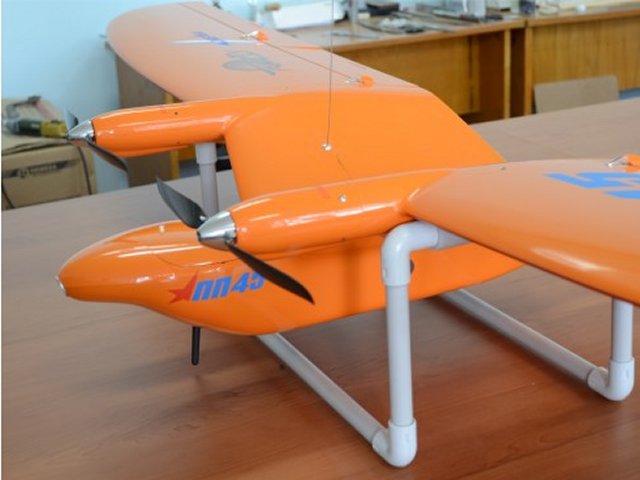Breaking news
Russian scientists and the Siberian State Technical University have developped new UAV for Arctic 41310155.
| 2015
|
|
|||
|
Defence & Security News - Russia
|
|||
|
|
|||
| Russian scientists and the Siberian State Technical University have developped new UAV for Arctic | |||
|
Scientists with the Siberian State Technical University (OmGTU) have developed an unmanned aerial vehicle (UAV) designed for operations in the harsh Arctic environment, Pavel Pogarsky, chief of the Small Unmanned Aircraft Design Bureau, OmGTU, told journalists on Tuesday.
|
|||
|
|
|||
 PP-45 UAV PP-45 UAV |
|||
|
|
|||
|
"This is a third-generation UAV capable of operating within the -40/+45°C ambient temperature bracket, in the face of 15 m/s wind, in snow and rain," he said. The PP-50 UAV is several times more effective in terms of performance than the earlier-developed PP-40 and PP-45 are.
Its operating radius is four times longer - 100 km, with its endurance showing a twofold increase to 3.5 hours, its service ceiling featuring a fivefold hike to 5,000 m, and its speed’s growth being from 80 km/h to 120 km/h. The aircraft can remain airborne for six hours at a stretch. "We have derived the Vzor patrol and surveillance pod from the PP-50. It can monitor any extended and stationary objects from the air and search for particular objects," Pogarsky said. "We have met the customers’ maximum moisture and dust payload protection requirement as much as possible." The trials have proven that the protection of the Vzor’s thermal imagers and still and video cameras is complaint with the IP-67 and IP-68 standards (Ingress Protection Rating - a classification system for levels of electric equipment protection from solid objects and water in line with the IEC 60529 standard). "In this case, numeral 6 stands for ‘dustproof’ and 7 for the equipment remaining operational even when submerged into water 1 m deep for several minutes," Pogarsky stressed. He emphasized that the UAV was an all-Russian product and that even its sophisticated autopilot was made in Russia. The Vzor’s gyro-stabilized platform allows it to ‘stare’ at any surface object with 10x-30x magnification, and the optics provide the UAV with the complete lookdown capability. The Russian Defense Ministry has displayed interest in the UAV. As was reported in the press, the first Russian UAV developed by the Simonov Design Bureau for Arctic surveillance and weighing about five tons will have flown before year-end 2015. In addition, the tests of the Inspector-01 UAV with an estimated endurance of 42-45 hours are to commence before the end of the year. The drone will be fit for use in the Arctic too. The Russian forces in the Arctic have been receiving Special Technological Center-developed Orlan-10 tactical UAVs since May 2015.
|
|||
|
|
|||
| © Copyright 2015 TASS. All rights reserved. This material may not be published, broadcast, rewritten or redistributed. | |||





























